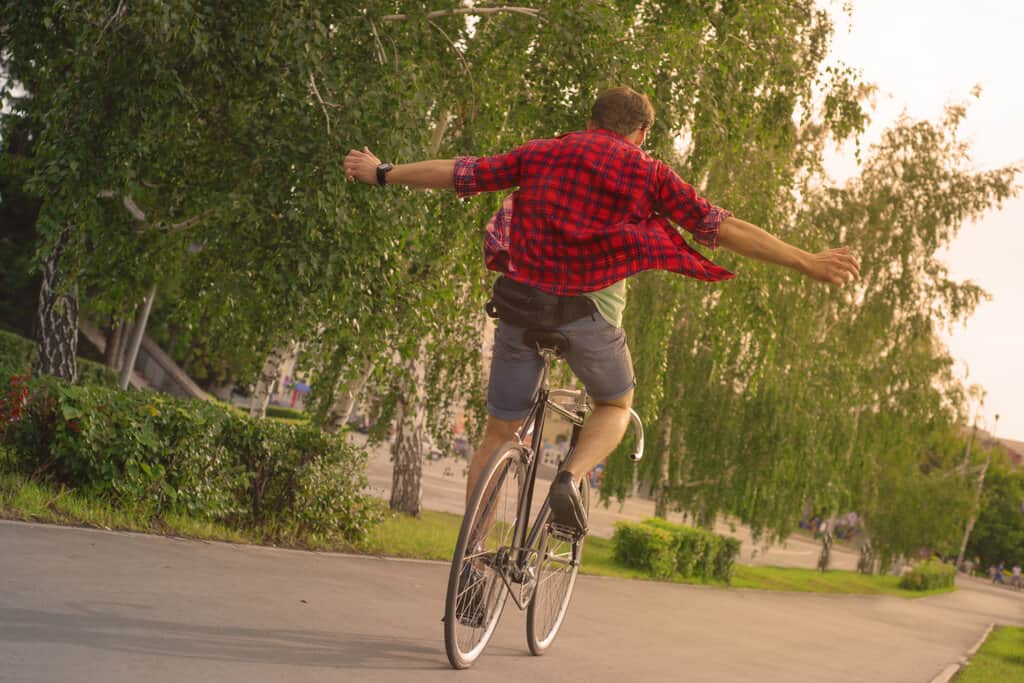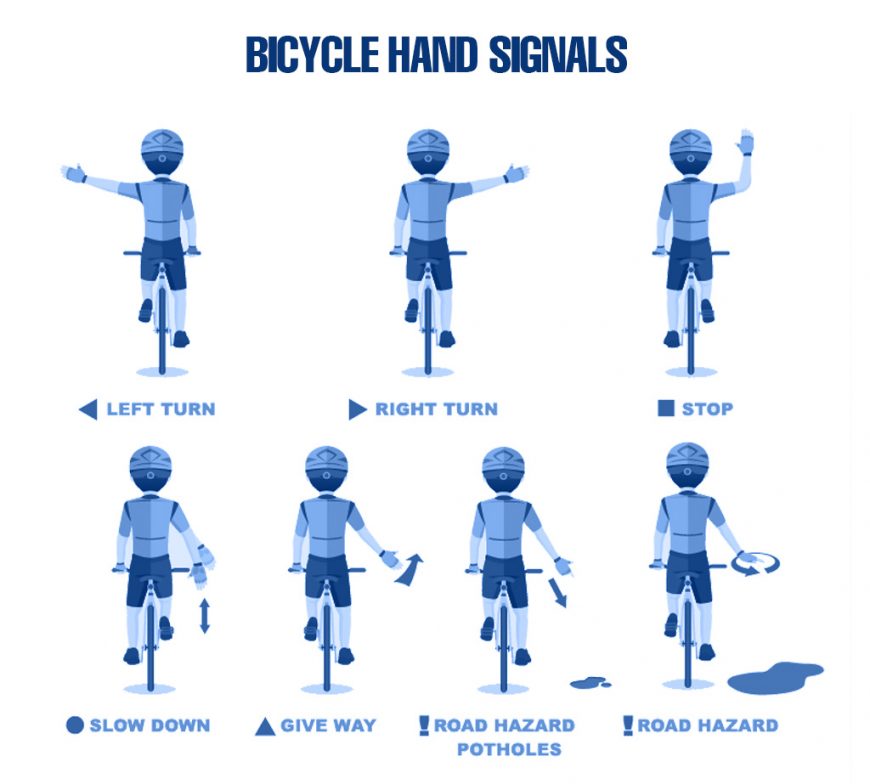The Freedom of No-Hands Cycling: An Overview
Imagine the wind in your hair, the sun on your face, and the exhilaration of riding a bike with no hands. This seemingly simple act embodies the very essence of cycling freedom. Learning how to ride a bike with no hands is not just a fun party trick; it is a valuable skill that can enhance your overall cycling experience.
Riding a bike with no hands offers several benefits. First, it increases your confidence as a cyclist, as mastering this skill demonstrates your ability to maintain balance and control over your bicycle. Second, it improves your balance, as you learn to adjust your body position and weight distribution to keep the bike steady. Lastly, it allows you to signal or carry items without interrupting your ride, making you a more efficient and adaptable cyclist.
Preparing for No-Hands Cycling: Building the Foundation
Before attempting to ride a bike with no hands, it is crucial to establish a solid foundation. This foundation includes a well-maintained bicycle, proper safety gear, and a solid understanding of basic cycling techniques. By ensuring that these prerequisites are met, you set yourself up for success and minimize the risk of accidents or injuries.
First, ensure that your bicycle is in good working condition. Check the tires for proper inflation, inspect the brakes for responsiveness, and verify that the chain is clean and lubricated. A well-maintained bicycle not only performs better but also reduces the likelihood of unexpected issues arising during your no-hands cycling adventure.
Second, invest in proper safety gear. A helmet is an absolute must, as it protects your head in the event of a fall. Additionally, consider wearing cycling gloves to improve your grip on the handlebars and padding your palms in case of a spill. High-visibility clothing is also recommended, as it increases your visibility to other road or trail users.
Lastly, familiarize yourself with basic cycling techniques. Ensure that you are comfortable changing gears, braking smoothly, and scanning the environment for potential hazards. A solid understanding of these foundational skills will make the transition to no-hands cycling smoother and safer.
Establishing Balance: The Key to No-Hands Cycling
Balance is the cornerstone of no-hands cycling. Mastering the art of maintaining balance without the assistance of handlebars requires a combination of practice, patience, and proper technique. The following tips will help you establish and maintain balance during your no-hands cycling journey:
- Coasting: Start by practicing balance while coasting. With both hands on the handlebars, gain some momentum and then slowly lift one hand off the handlebar. Focus on keeping the bike steady and maintaining a straight line. Once you feel comfortable, switch hands and repeat the process.
- Turning: As you become more confident coasting with one hand, try incorporating gentle turns. To turn right, apply a slight pressure to the left handlebar grip while keeping your weight centered over the bike. The opposite is true for turning left. Gradually increase the radius of your turns as your balance and control improve.
- Braking: Learning to brake while keeping your balance is essential. Start by applying gentle pressure to the brakes with both hands on the handlebars. As you become more comfortable, practice braking with one hand off the handlebars. Remember to distribute your weight evenly over the bike to maintain balance while slowing down.
By focusing on these three aspects of no-hands cycling—coasting, turning, and braking—you will develop a strong foundation in balance and control, making the transition to full no-hands riding smoother and safer.
Building Confidence: Gradual Progression and Practice
Confidence is a crucial factor in mastering how to ride a bike with no hands. By following a gradual progression and committing to consistent practice, you can build the confidence needed to maintain balance and control during no-hands cycling. Here are some steps to help you develop your confidence:
- Set realistic goals: Break the no-hands cycling process into smaller, manageable goals. For example, start by practicing balance while coasting for short distances, then gradually increase the duration. This approach allows you to track your progress and celebrate small victories, boosting your confidence along the way.
- Create a safe environment: Choose a safe, flat, and obstacle-free area to practice no-hands cycling. A traffic-free environment will help minimize distractions and reduce the risk of accidents, allowing you to focus on building your skills and confidence.
- Practice regularly: Consistency is key when learning how to ride a bike with no hands. Set aside time each week to practice, and try to maintain a regular routine. Regular practice will help reinforce the skills and techniques you’ve learned, making it easier to progress to more advanced maneuvers.
- Stay positive: Maintaining a positive attitude during the learning process is essential. If you encounter setbacks or struggle with certain aspects of no-hands cycling, remind yourself that progress takes time and patience. Stay focused on your goals, and don’t be afraid to seek help or advice from experienced cyclists or instructors.
By following this gradual progression and committing to consistent practice, you will build the confidence needed to become a proficient no-hands cyclist.
Advanced Techniques: Steering, Signaling, and Carrying Items
Once you have mastered the basics of no-hands cycling, you can explore more advanced techniques to enhance your skills and versatility. Here are some advanced techniques to consider:
- Steering: While it may seem counterintuitive, you can steer your bike without using the handlebars. To practice no-hands steering, first, ensure that you have achieved balance and control while coasting. Then, gently lean your body in the direction you want to turn. Your bike will naturally follow your body’s lead, allowing you to steer without touching the handlebars. Remember to maintain a steady speed and avoid abrupt movements to prevent wobbling or losing balance.
- Signaling turns: Signaling turns is crucial for communicating your intentions to other road or trail users. To signal a turn without using your handlebars, simply extend your arm in the direction you plan to turn. Keep your arm straight and high enough to be visible to others. Practice this technique in a safe environment before attempting it on busier roads or trails.
- Carrying items: Carrying items while riding a bike with no hands can be convenient, but it requires careful consideration and practice. Opt for lightweight, easy-to-handle items, and attach them securely to your bike or clothing. For example, you can use a backpack, saddlebag, or basket. When carrying items, be mindful of your balance and adjust your body position as needed to maintain stability. Avoid carrying heavy or bulky items, as they may affect your control and increase the risk of accidents.
By mastering these advanced techniques, you will become a more versatile and skilled no-hands cyclist, capable of handling various situations and environments.
Troubleshooting Common Challenges: Overcoming Obstacles
Even with practice and dedication, you may encounter challenges while learning how to ride a bike with no hands. Here are some common obstacles and strategies to help you overcome them:
- Wobbling: Wobbling or instability is a common issue when attempting no-hands cycling. To address this challenge, ensure that you have achieved balance and control while coasting with both hands on the handlebars. Gradually lift one hand off the handlebar, focusing on maintaining a straight line and keeping your weight centered over the bike. If you feel wobbling, gently apply pressure to the handlebars to regain stability. Over time, your balance and control will improve, reducing the likelihood of wobbling.
- Uneven terrain: Navigating uneven terrain without the assistance of handlebars can be tricky. When encountering bumps, potholes, or debris, focus on maintaining a steady speed and adjusting your body position as needed to absorb the impact. Keep your knees slightly bent and your center of gravity low to improve your stability and adaptability on uneven surfaces.
- Unexpected obstacles: Anticipating and reacting to unexpected obstacles is crucial while riding a bike with no hands. Develop your peripheral vision and scan the environment regularly to spot potential hazards. If you encounter an obstacle, use your body weight and steering techniques to navigate around it. If necessary, quickly grip the handlebars to regain control and maneuver safely.
By understanding and addressing these common challenges, you will be better prepared to handle the unexpected and become a more skilled no-hands cyclist.
Staying Safe: Balancing Fun and Caution
Safety should always be a top priority when learning how to ride a bike with no hands. By following these guidelines, you can minimize risks and enjoy the freedom of no-hands cycling while ensuring your well-being:
- Choose the right environment: Select a safe, open, and flat area to practice no-hands cycling. Avoid traffic, narrow paths, and uneven terrain until you have gained sufficient skills and confidence. Ideal practice locations include empty parking lots, parks, or dedicated cycling facilities.
- Wear appropriate gear: Always wear a properly fitting helmet and other safety gear, such as cycling gloves and high-visibility clothing. This equipment will protect you in case of a fall and help you maintain a secure grip on the handlebars.
- Practice during good weather: Avoid practicing no-hands cycling in adverse weather conditions, such as rain, wind, or low light. Poor weather can negatively impact your balance, visibility, and control, increasing the risk of accidents.
- Avoid distractions: Keep your focus on the road or trail while practicing no-hands cycling. Avoid using your phone, listening to loud music, or engaging in conversations that may distract you from maintaining balance and control.
- Start with short durations: Gradually build up the duration of your no-hands cycling practice sessions. Start with short intervals and gradually increase the time as your skills and confidence improve. This approach will help you adapt to no-hands cycling while minimizing the risk of accidents.
- Know your limits: Understand your skill level and limitations, and don’t attempt advanced no-hands cycling techniques until you are ready. Pushing yourself too hard or too fast can lead to accidents and injuries.
By following these safety guidelines, you can enjoy the freedom of no-hands cycling while minimizing risks and ensuring a fun and rewarding experience.
Continuous Improvement: Expanding Your Cycling Skills
Once you have mastered the art of no-hands cycling, it’s time to explore additional resources and techniques to further enhance your cycling skills and confidence. Here are some suggestions for continuous improvement:
- Cycling courses and workshops: Participate in local cycling courses or workshops to learn new skills, techniques, and best practices from experienced instructors. These educational opportunities can help you improve your overall cycling proficiency and introduce you to new cycling disciplines.
- Group rides: Join group rides organized by local cycling clubs or communities. Group rides offer a supportive and social environment where you can learn from more experienced cyclists, practice your skills, and gain confidence in various cycling scenarios.
- Bike maintenance: Develop a solid understanding of bicycle maintenance and repair. Familiarize yourself with basic bike mechanics, such as fixing a flat tire, adjusting brakes, and maintaining a clean and well-lubricated drivetrain. Proper bike maintenance will not only extend the lifespan of your bicycle but also ensure optimal performance during your rides.
- Different cycling disciplines: Explore various cycling disciplines, such as road cycling, mountain biking, cyclocross, or track cycling. Each discipline offers unique challenges, skills, and experiences that can help you become a more versatile and well-rounded cyclist.
- Stay informed: Keep up-to-date with the latest cycling news, trends, and research. Follow reputable cycling websites, blogs, and publications to stay informed about industry developments, safety recommendations, and training tips. Staying current will help you make informed decisions about your cycling equipment, techniques, and overall approach to the sport.
By continuing to develop your cycling skills beyond no-hands riding, you will become a more proficient and confident cyclist, ready to tackle various challenges and enjoy the many benefits that cycling has to offer.









:max_bytes(150000):strip_icc()/How-Pelotons-Cody-Rigsby-is-Mastering-the-Art-of-Rest-and-Recovery-GettyImages-1235163993-2000-cea0f2310f2a482491ef31004ccb97d2.jpg)